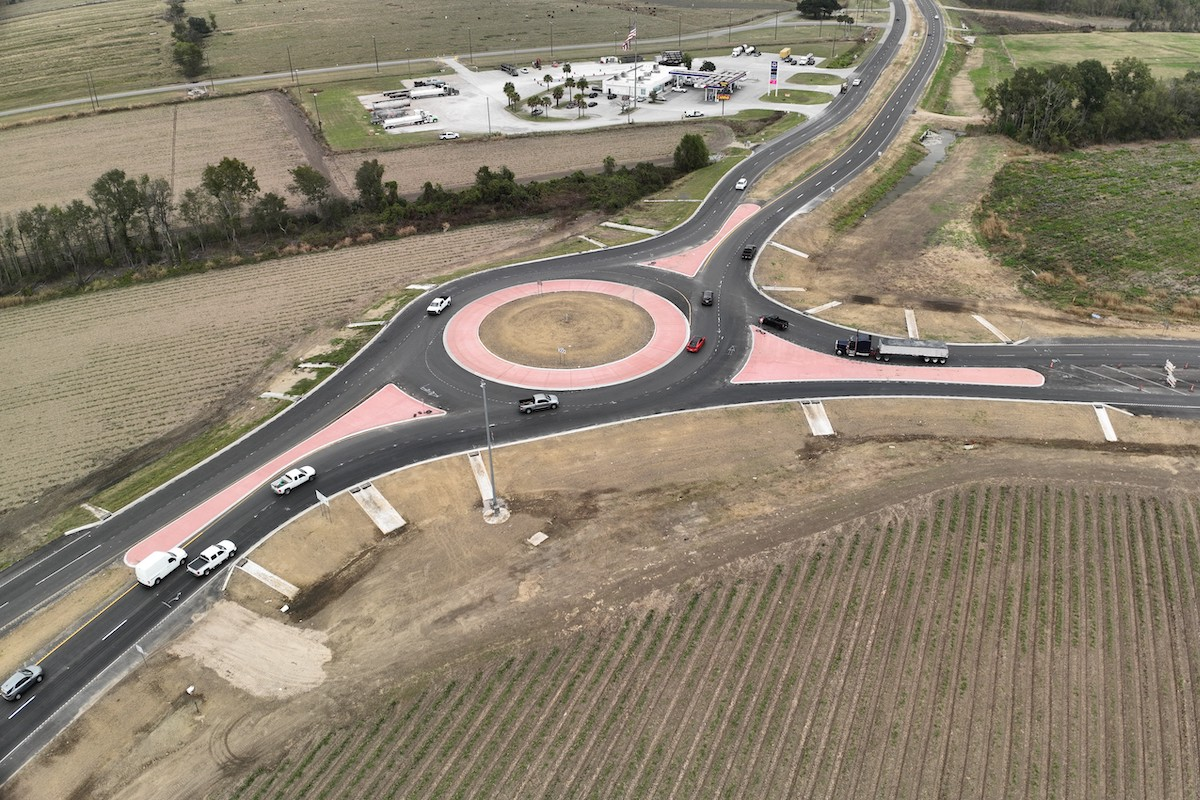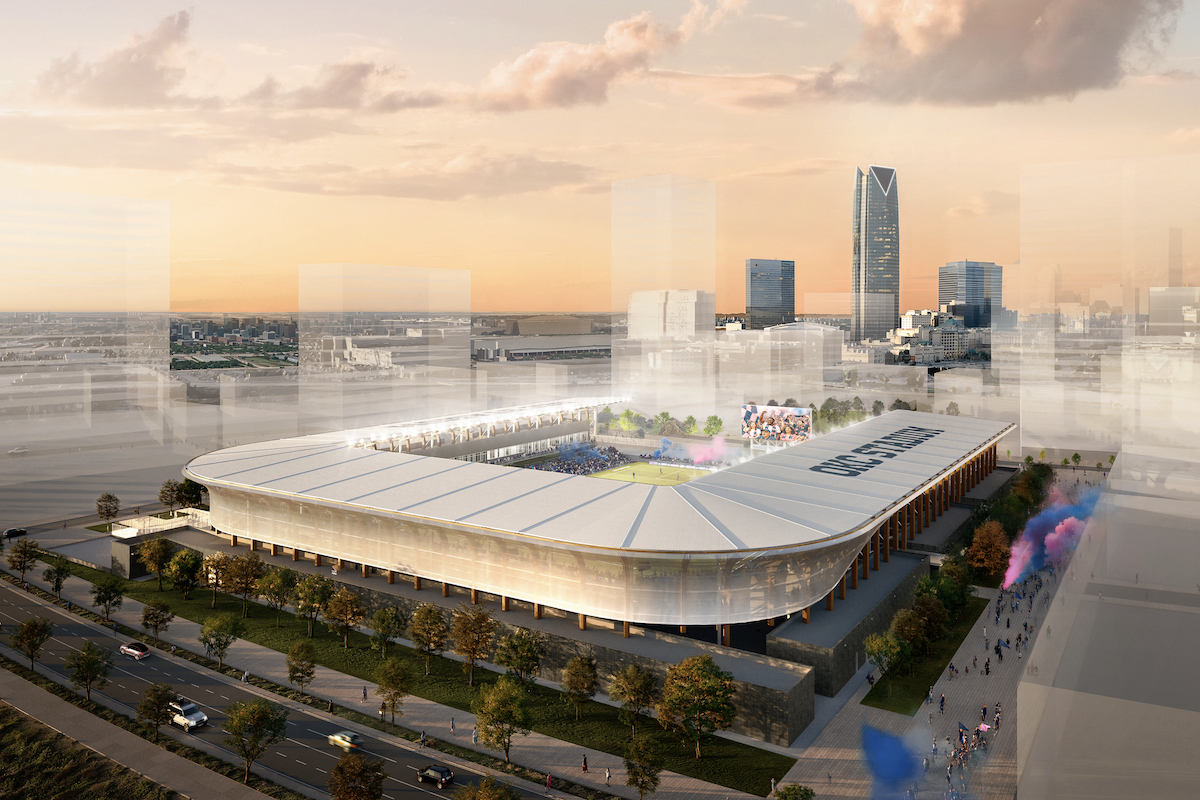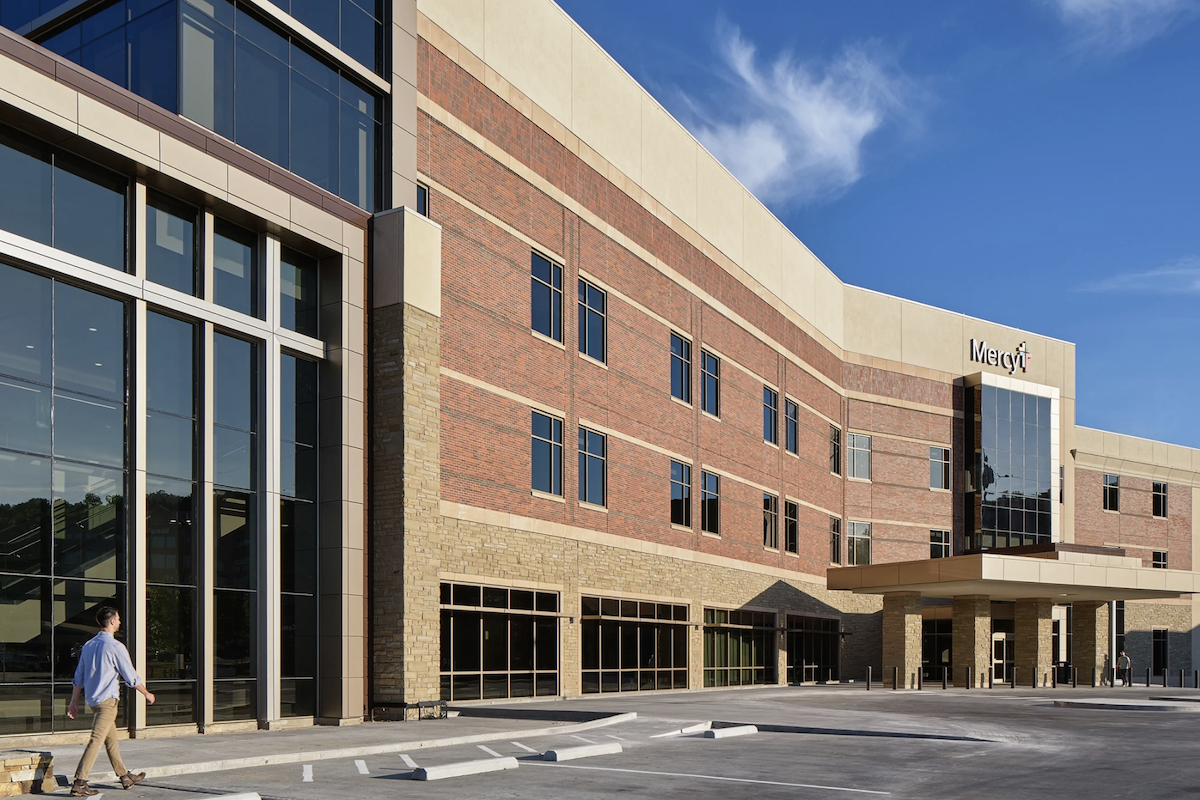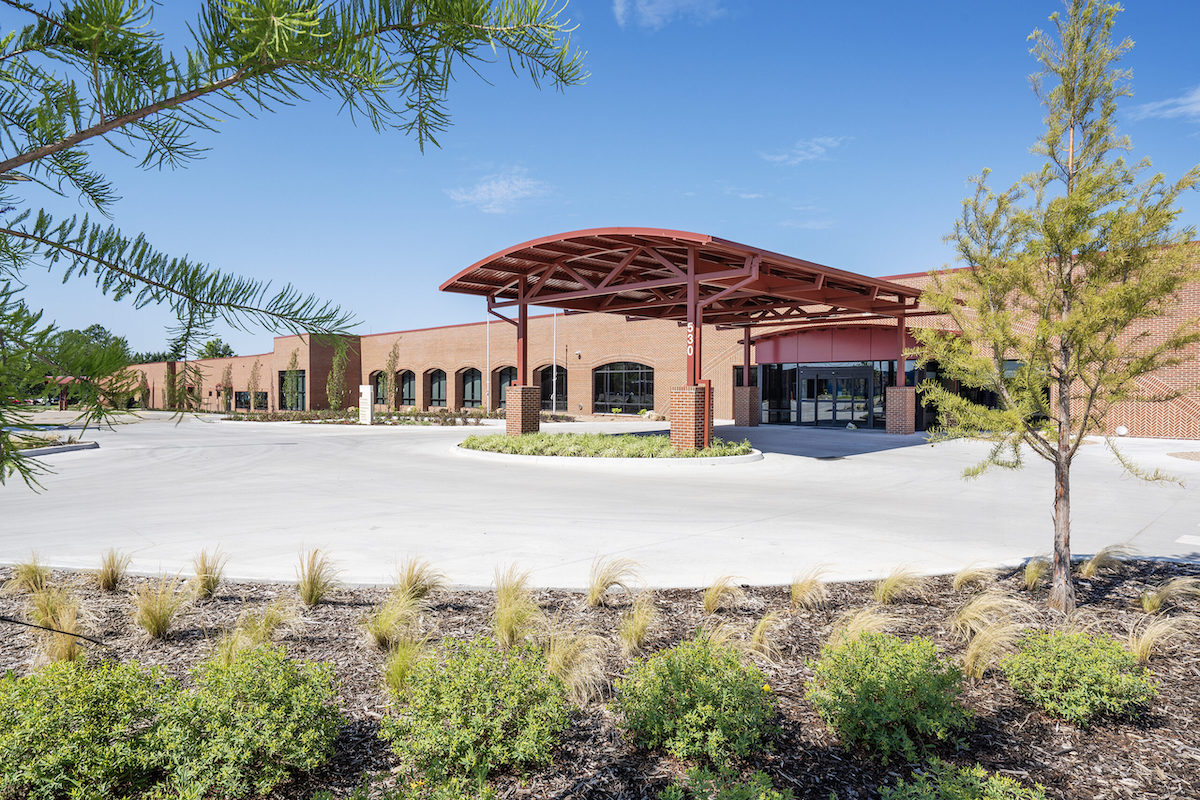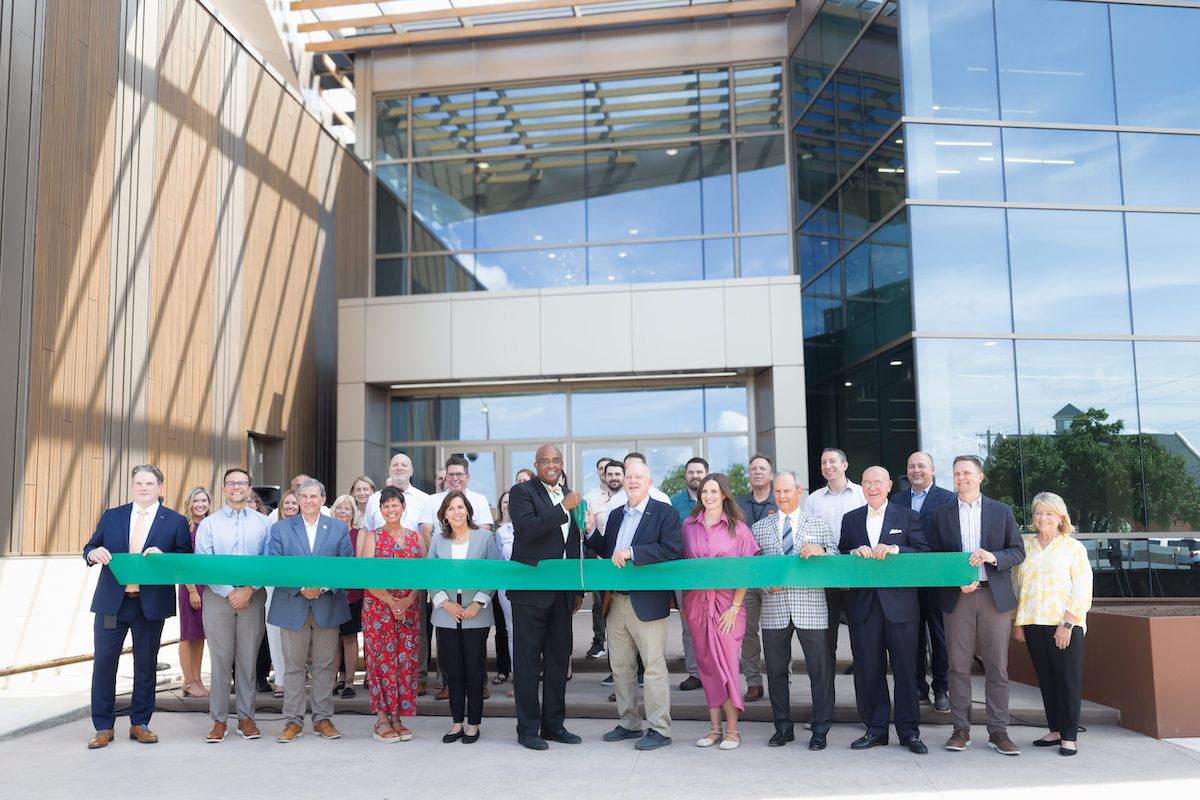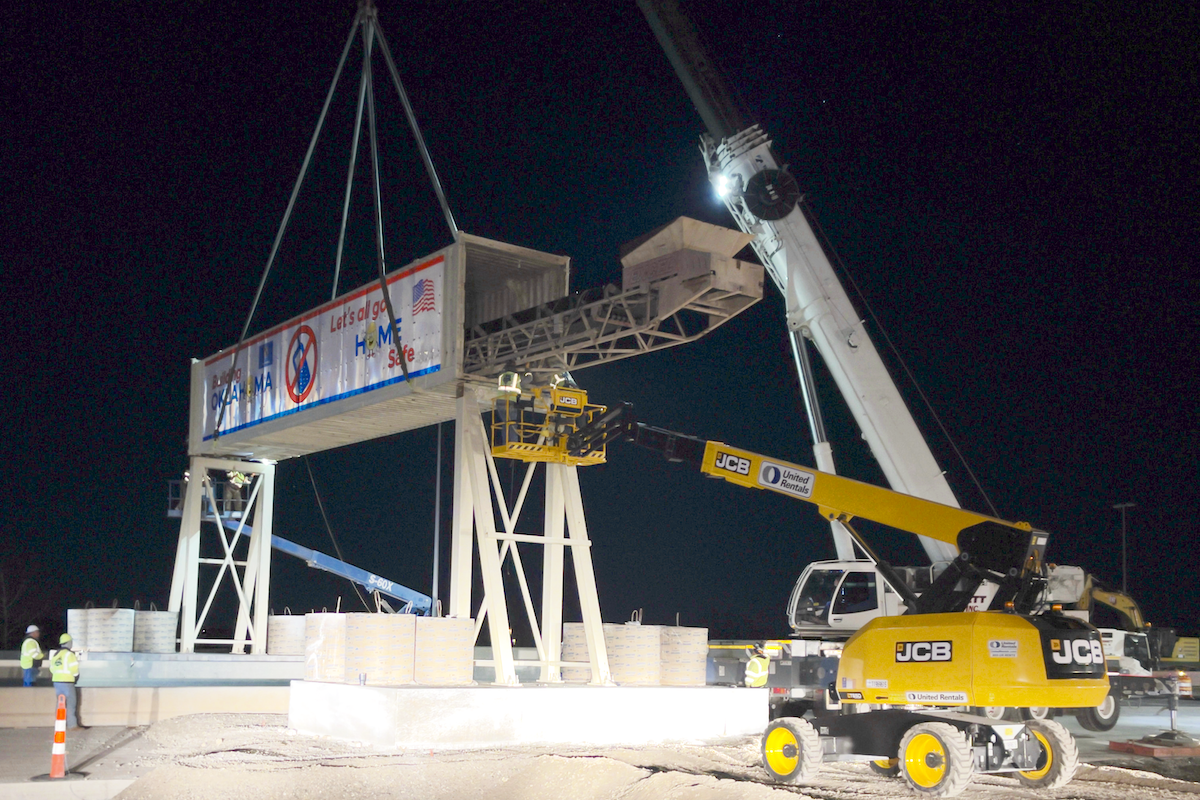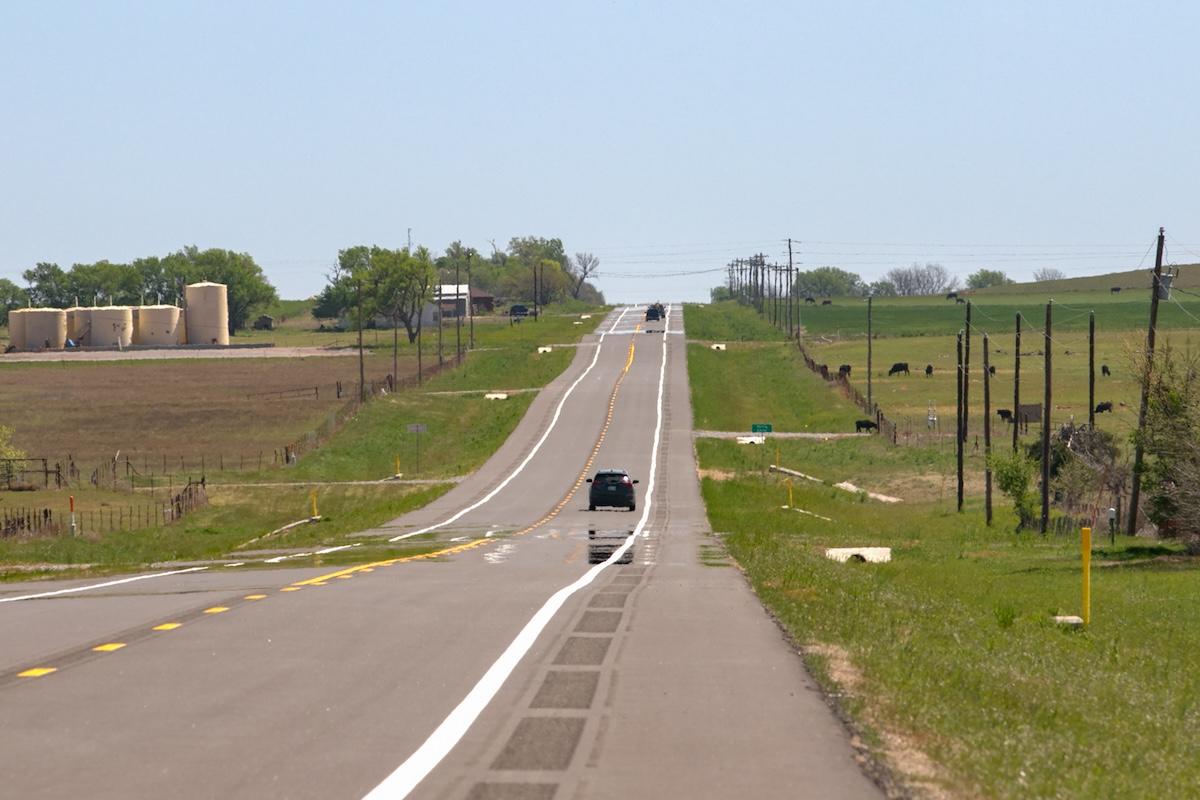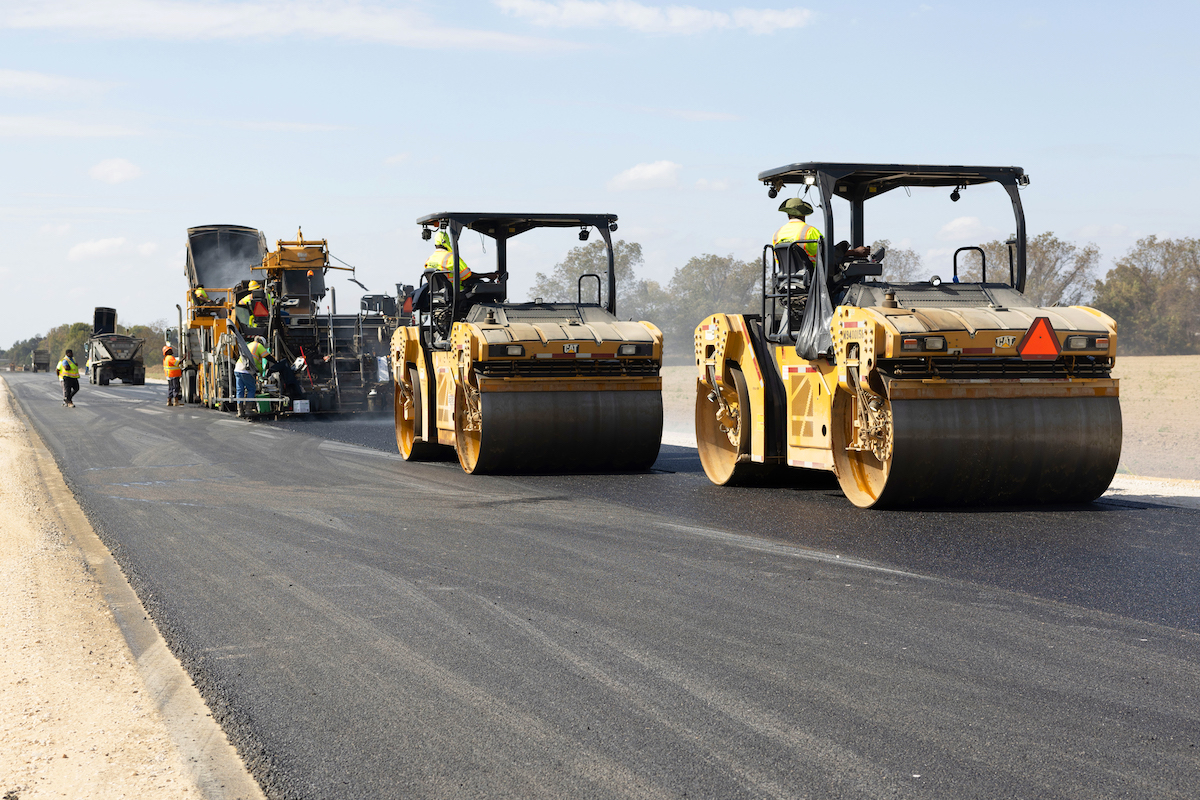Almost 15 years ago, the North Carolina Department of Transportation (NCDOT) foresaw that the greater Raleigh metropolitan area would outpace its infrastructure. After public meetings, planning, and getting the right contractors in place, widening 13 miles of Interstate 40 (I-40) from Raleigh to Cornwallis Road in Clayton kicked off in October of 2018.
North Carolina construction contractor S.T. Wooten was NCDOT’s pick for the $420 million project. Despite the flourishing area’s growth — which caused even more tasks to be heaped on to the contractor’s largest “to-do list” to date — the project is scheduled to be completed on time and on budget this fall.
“You may read about Raleigh online, but it’s the amount of traffic that people just do not understand,” said Matt Davis, S.T. Wooten’s Division Manager assigned to lead the road widening project. “I remember one morning before dawn, I was coming in on eastbound 40, and looking back, there was just a line of headlights along that whole stretch that morning at 6:30 a.m. And I thought, ‘Goodness gracious, it’s just endless.’”
With a population of over 1.6 million people, the Greater Raleigh metro area offers an abundance of benefits, including a burgeoning job market, educational options, professional sport teams, and diverse cultural and dining options.

| Your local Case Construction Equipment Inc dealer |
|---|
| ASCO Equipment |
“As Wake County continues to try to keep up with the influx of individuals moving here for general business opportunities, people are moving to the outskirts, and that's really where the most significant boom has been occurring, creating a spiral of exponential growth compared to what it was,” said Robert Bullock, Deputy Division Construction Engineer at NCDOT.
According to Wake County’s website, it is one of the fastest growing counties in the country. More than 1 million people call Wake County home, and the county is growing more than twice as fast as the rest of the state. The county grows by approximately 51 people per day and added 225,000 people over the last decade.
The greatest challenge for the project team was the volume of traffic they would have to contend with. “Widening and maintaining the existing travel lanes is all tied to the amount of traffic volume and traffic control, the work zones, work zone devices, and keeping everybody moving through it,” Bullock said.
“We maintained the number of lanes from the start to the end, but we have had to constantly shift traffic around to either be towards the inside of the interstate as we built up the median, the interior section of the interstate, to the aisles to work on the outside, or vice versa,” he continued.
“Just managing the traffic volume — specifically when we're trying to get all of our materials, asphalt, and stone in place throughout the project — was difficult,” Bullock said. “It's a lot of dump trucks, a lot of hauling activities, a lot of concrete to get delivered to replace the number of structures we had.”
The project’s western section of I-40 was adjacent to existing concrete and asphalt plants. S.T. Wooten adapted an overpass with temporary fabric ramp structure, giving supply trucks direct access to median and shoulder work areas. The access point successfully supported construction along more than half of the corridor. S.T. Wooten’s temporary ramp prevented more than 34,000 haul truck trips in interstate traffic earlier in the project — from dirt, stone, asphalt, and concrete trucks.
On the eastern end of the project, to help manage traffic challenges for the crews, the team incorporated a unique, purpose-built 280-foot-long conveyor system to help move material from the asphalt plant, over the busy highway, and into a silo in the median-area work zone. According to S.T. Wooten, the conveyor system saved approximately 8,000 truck loads from being in traffic, with another 500 to 750 future truck loads expected before it has to be removed.
“The system was built and designed for a previous project, but we were able to use it again,” Davis said. “It’s been modified to where we can have pieces of it taken apart and put back together.”
The team also placed sensors along the road in the project to help with retrieving data for traffic management, creating a “smart work zone.”
Designed as an incident management system, over two dozen sensors were connected and placed in predetermined locations before, throughout, and beyond the project limits in order to measure the traffic queue, as far as each lane and speed. Remote message boards were deployed throughout the project as well as stationary signage throughout corridor entirety.
“If an incident happened in a particular location of the project, there were measures in place that the state operation center could more or less activate these Changeable Message Signs and Dynamic Message Signs to try to direct traffic to these alternate routes through the project limits or around the project limits to avoid gridlock when there was an incident,” Davis said.
Bullock also said there was a significant amount of boring for new drainage pipe on the corridor, necessitating the team access the space underneath the interstate while staying within their footprint without any impact to the project.
“We had to get a lot of the new drainage systems installed, and we needed to get the boring work done,” he said. “It’s time sensitive work, and then that allowed us to continue on a lot of the other work that's tied to it.”
Not long after the project’s approval, Amazon greenlighted a new 680,000-square-foot distribution center on Jones Sausage Road, where at the time, I-40 connected with a conventional diamond interchange.
NCDOT enhanced S.T. Wooten’s widening contract work to include an interchange upgrade that had to be executed in coordination with the Amazon facility’s scheduled late 2020 opening.
Because the existing 350-foot-long interchange bridge was already wide enough to accommodate five travel lanes, the project team incorporated a diverging diamond configuration with only minor structural modifications, and without the need for additional right of way. The project teams were able to quickly integrate the last-minute interchange upgrade into the overall project scheme.
Originating in France during the 1970s, the diverging diamond interchange (DDI) was designed to make travel safer because it eliminates left turns in front of oncoming traffic. It also improves efficiency at the intersection and reduces traffic queues.
“We installed a median railing to separate traffic and a new sidewalk/pedestrian railing on one side,” Bullock said. “The interchange is ready-made for Amazon’s trucks and workforce as well as future development in the area.”
Relatively new to North Carolina, and to the United States overall, drivers may not be familiar with the atypical configuration, particularly with regard to merging maneuvers along the opposite side of the roadway or the crossover flow of traffic. The I-40 corridor now has the distinction of hosting two DDI structures, one on Jones Sausage Road (exit 303) and the other at the N.C. 42 (exit 312) interchange.
“It’s a unique design as far as traffic patterns go because you're essentially pushing traffic across onto the opposite side of the road, and this allows for free-flowing movements to your ramps and through traffic, so it makes it safer and more efficient,” Davis said.
NCDOT feels the project has been an overall success and was managed well. “S.T. Wooten always seemed to be looking ahead and trying to be proactive to the best they could,” Bullock said. “They were able to see where there could be hurdles or where their biggest schedule impacts were going to be, and they made sure we were involved in those conversations to try to keep everybody on time.”
“RK&K was our design engineer firm on this, and they've helped a lot through the issues. The DOT has been great to work with on this project. They understand the challenges that we have out there, and they worked well with us,” Davis said. “I know the NCDOT did a heck of a job at making sure they were doing what they needed to do to keep their projects on track.”
“We are happy that we’re going to be able to close this out this year,” Davis added. “We’ve got a few miles left to complete down at the end, and we’ll hopefully completely eliminate any remaining bottleneck through this 14-mile section of interstate over the next four months.”
The final 4 miles of the widening project, from U.S. 70 to Cornwallis Road, is scheduled to be complete in fall 2024.
- Owner: North Carolina Department of Transportation; Robert Bullock, Deputy Division Construction Engineer
- Design-Build Contractor: S.T. Wooten; Matt Davis, Division Manager
- Engineering Firm: RK&K; Brandon McInnis, PE, Executive Director, Transportation
Photos courtesy of S.T. Wooten
























